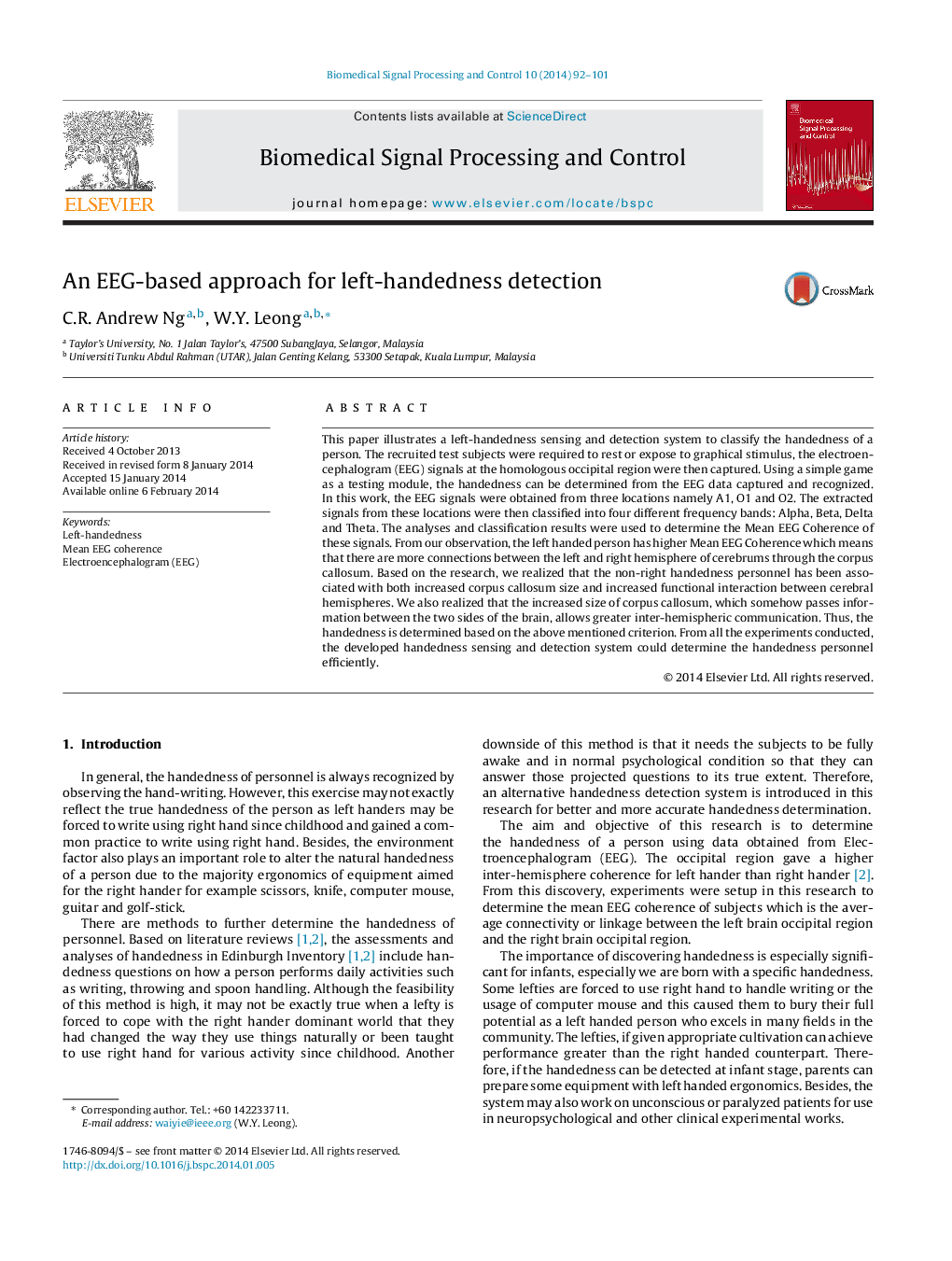| Article ID | Journal | Published Year | Pages | File Type |
|---|---|---|---|---|
| 558793 | Biomedical Signal Processing and Control | 2014 | 10 Pages |
This paper illustrates a left-handedness sensing and detection system to classify the handedness of a person. The recruited test subjects were required to rest or expose to graphical stimulus, the electroencephalogram (EEG) signals at the homologous occipital region were then captured. Using a simple game as a testing module, the handedness can be determined from the EEG data captured and recognized. In this work, the EEG signals were obtained from three locations namely A1, O1 and O2. The extracted signals from these locations were then classified into four different frequency bands: Alpha, Beta, Delta and Theta. The analyses and classification results were used to determine the Mean EEG Coherence of these signals. From our observation, the left handed person has higher Mean EEG Coherence which means that there are more connections between the left and right hemisphere of cerebrums through the corpus callosum. Based on the research, we realized that the non-right handedness personnel has been associated with both increased corpus callosum size and increased functional interaction between cerebral hemispheres. We also realized that the increased size of corpus callosum, which somehow passes information between the two sides of the brain, allows greater inter-hemispheric communication. Thus, the handedness is determined based on the above mentioned criterion. From all the experiments conducted, the developed handedness sensing and detection system could determine the handedness personnel efficiently.
